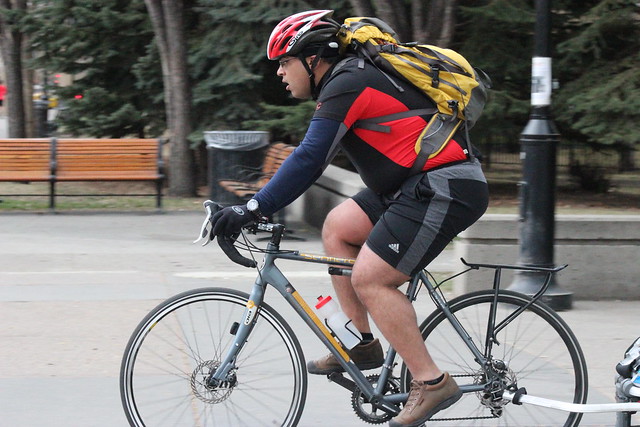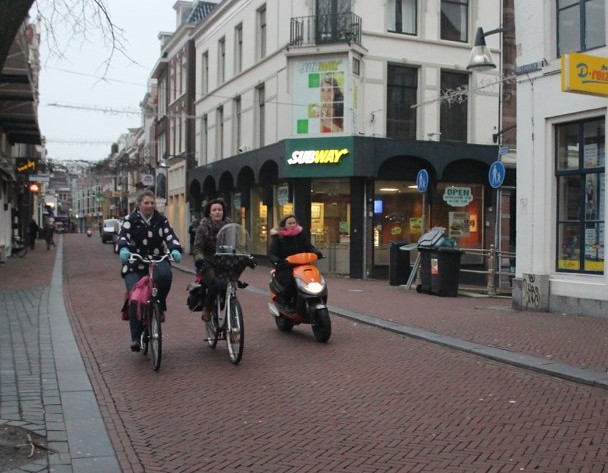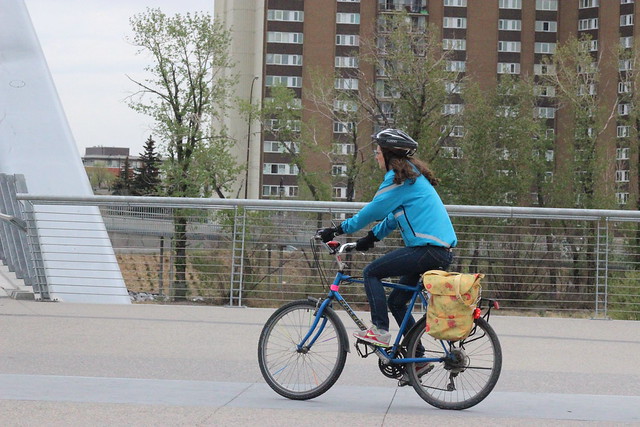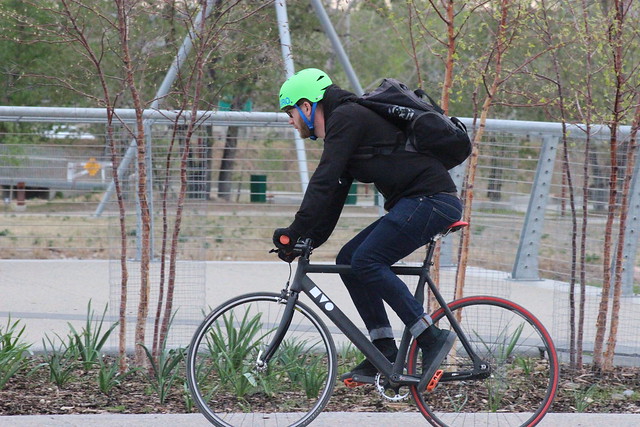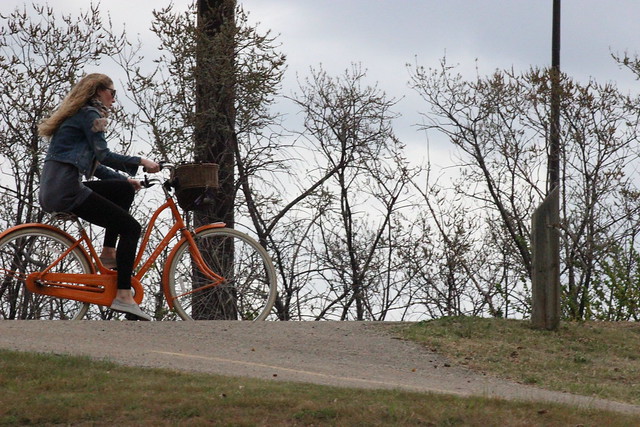For all the work that goes into making streets safer and more welcoming for cyclists, consider perhaps the greatest and most under-appreciated tool of this transition: The ubiquitous camera.
Street photography is nothing new, of course. From Henri Cartier-Bresson to Robert Frank, impromptu moments from city life have always been at the forefront of photographic art.

Henri Cartier-Bresson’s famous Hyères, shot in 1932.
You could even argue the first photograph ever taken of people was street photography.

“Boulevard du Temple,” a daguerreotype made by Louis Daguerre in 1838, one of the world’s first photographs to include people.
That influence has only grown in recent years, from blogging (the Sartorialist) and then social media (Humans of New York, everything on Instagram that isn’t food). And thanks to that little computer in your purse that happens to have a camera lens attached to it, sdtreet photography these days transcends even its own medium and helps define the esthetic of cities.
That’s why it’s evolved into such a powerful tool for urban cycling. Consider Mikael Colville-Andersen’s Copenhagen Cycle Chic, which spawned imitators all over the world.
The original Copenhagen Cycle Chic photo by Mikael Colville-Andersen.
Cool photos, right? But because these photos involve bicycles, and everything about bicycles these days is political, this type of photography is inherently political.
In Toronto, during 2011 and 2012, photographer Lincoln Clarkes captured dozens of images that became Cyclists, a book of photography of people on two wheels, most of them looking sexily non-plussed despite the hostile environment surrounding them at the time. While not overtly so, the politics of these photographs is obvious considering Clarkes shot them at the height of late mayor Rob Ford’s anti-bike backlash, when the ever-thoughtful mayor compared riding a bike in Toronto to swimming with sharks.

A shot from Lincoln Clarkes’s Cyclists.
In the book’s forward, Clarkes is quoted saying the photographs serve as “sexed-up, environmentalistic, fashionesque portraiture, which is a subtle protest against the petro-chemical and automobile industries.”
Here in Calgary, a bike-loving man named Peter Oliver has started a formal project to harness the political power of bicycle street photography. He’s part of a group that rallied support for the adoption of a pilot project of downtown bike lanes last year, and now he’s hoping to solidify that support by giving people a glimpse into exactly what those bike lanes have wrought: People on bikes.
Oliver hopes showcasing photographs of everyday cyclists in Instagram will help dispel the notion that all cyclists are latte-sipping hipsters or angry Lyca-clad suburban commuters blowing through red lights (or sometimes both).
“I really want to get down to people on the street, and show the diversity of people who ride bikes,” Oliver told me over a beer recently. “I want to break down the stereotypes about who cyclists are, and show that’s it’s just ordinary people doing what they do. It’s just part of their life.”
Bryce Meyer, a top editorial photographer, jumped at the chance to be the first contributor to People On Bikes YYC. Meyer, a former competitive road cyclist who ended his itinerant career in his early 20s after being robbed at gunpoint while training in Arizona, says the project is less about the politics or fashion for him, and more of a passion project. He loves everything to do with cycling, and he thought this was a way to give back to a cause he cares about while indulging himself (the fact that he’s managed to learn how to shoot photos while riding his own bike certainly helps — “Forget the viewfinder,” he advises. “Trust the shutter.”)
“It doesn’t matter if you’re wearing cutoffs with socks up to your knees or whatever,” he says. “It’s all about the riding.”
It’s a simple concept that has proven political punch. Think about the defining images of Amsterdam, and you’ll probably think about a bike. In Paris, those cafes will elegant French women fingering cigarettes often have bicycles as a backdrop. Even in Montreal, photographs of hirsute young artists riding a Bixi bikes are becoming a de facto brand.
All of which shows that bikes can be a seamless part of any city.





